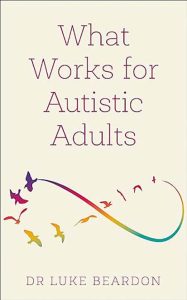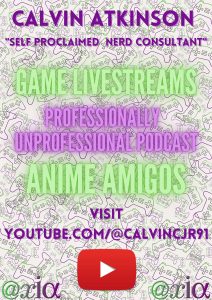by Dr. Luke Beardon
Published by Sheldon Press
I feel I should declare a bias before starting this review. I have met Luke on a number of occasions, and some of these meetings have had a profound impact on me. Luke is one of the few people whom I can still share a good “debate” with, I admire his mind, and find his reason and rationale thought provoking.
So with that said, Dr Beardon’s latest offering “What Works for Autistic Adults”, is a wonderful look “through the autistic lens”, reframing how autism may be perceived. The book is based around Luke’s “Golden Equation”, Autism + Environment = Outcome, and is split into three chapters.
Chapter one describes the Golden Equation, and questions why it should be the autistic person who adapts to the environment, instead of adapting the environment to suit the needs of the autistic individual. The first subsection delves into the “autistic self”, a concept I found slightly confusing simply because my perspective of “self” is all encompassing of my various personas, and not defined as “autistic” – but that’s just me! Part of the enjoyment and entertainment I receive from discussions with Luke are my petty and pedantic interpretations of “words”, so purely linguistic interplay, as I find I agree with Luke conceptually on the majority of his views on autism.
Luke goes into great detail over a number of pages as to what he means by “Autistic Self” though, which my simplistic brain summed up as “Know Thy Self” and “To thine own self be true”. For an autistic person, having a good understanding of what autism is and how it manifests in their particular case is something only the individual can do, but is well worth doing. Luke guides us through his thinking on Identification, Accuracy of information, and what we actually KNOW, factually… which may not be quite as much as some profess!
Luke goes through a whole host of observations, and considerations we can make regarding the various forms of “energy” we have, such as Mental, Physical, Sensory, Processing, and Emotional energy amongst others. Knowing how these interact and affect us can aid in bringing about a more contented individual.
In the section on Sensory Environment, Luke asks the reader to go through his lists of experiences of the 5 senses, asking how one reacts. There are also 3 additional senses described as “Vestibular, Proprioception and Interoception”.
The penultimate section of the first chapter Luke warns “is a deeply unpleasant section to read”. Personally I find Luke’s observations on “Society” as thoughtful and accurate, and being a “negative” individual my Self, I find I resonate more with such perspectives. The one which is a major concern to me is the idea of “cures” or “treatments” for “autism”. I think most of us autistic folk find such notions as, at the very least, deeply disturbing, and at worst falling under the umbrella of “eugenics” (a concept still very much alive in the minds of some, even in the 21st century).
Chapter two is titled “Autism Identification”, which is a very complex concept and situation. I think this chapter is perhaps where Luke exercises most “critical thought”. He states his position, he doesn’t like the “medicalisation” of Autism, or the words used, such as “Diagnosis” (a word I love, Greek for “Through Knowledge”!). He goes through the Diagnostic and Statistical Manual (The DSM) giving his critique of the wording and meaning of the 436 words in the main body of points A to E in the criteria (and yes, I assume Luke counted them! *chuckle*).
The final chapter is on “Autistic Safety”. This I found interesting because it recognises that although autism per se is not negative, many (but not all) of us experience higher levels of anxiety, fear and confusion. I think of these as “comorbidities”, although I think Luke uses “co-occurrences” to differentiate these experiences. This section brought most amusement to both my mother and myself, as Luke includes fictional conversations which have a striking resemblance to those I have with my mother! A brilliant and hilarious example is when Jane asks Jo to give her an estimate. She fails to ask the question with enough detail, then when clarified does not like the answer, and asks for an “exact estimate”, which Jo responds hilariously with “I don’t think you understand, an estimate is an estimate, an exact estimate is not an estimate, it’s an oxymoron”! I don’t know whether the humour is intentional, or whether it is merely my resonance with some of the examples which brings me amusement.
I think this book will be very well received by the autistic community, as not only being insightful, but also providing practical suggestions as to how improvements to the lives of autistic people can be made.
Share This Post:








Always an honour to read your words about my words, Dream. Many thanks for taking the time to read and review .
Just decided to get this on Kindle, for immediate reading far overseas. I can probably get a real copy when I get to the UK later this year. Perhaps a review of sorts will eventually arise here and on the .com site. In case you don’t already know, readers outside the UK get their downloads from .com in the states. But I can already see at least one Axiaite has made it over there. 🙂 Looking forward to again reading something meaningful by Luke!